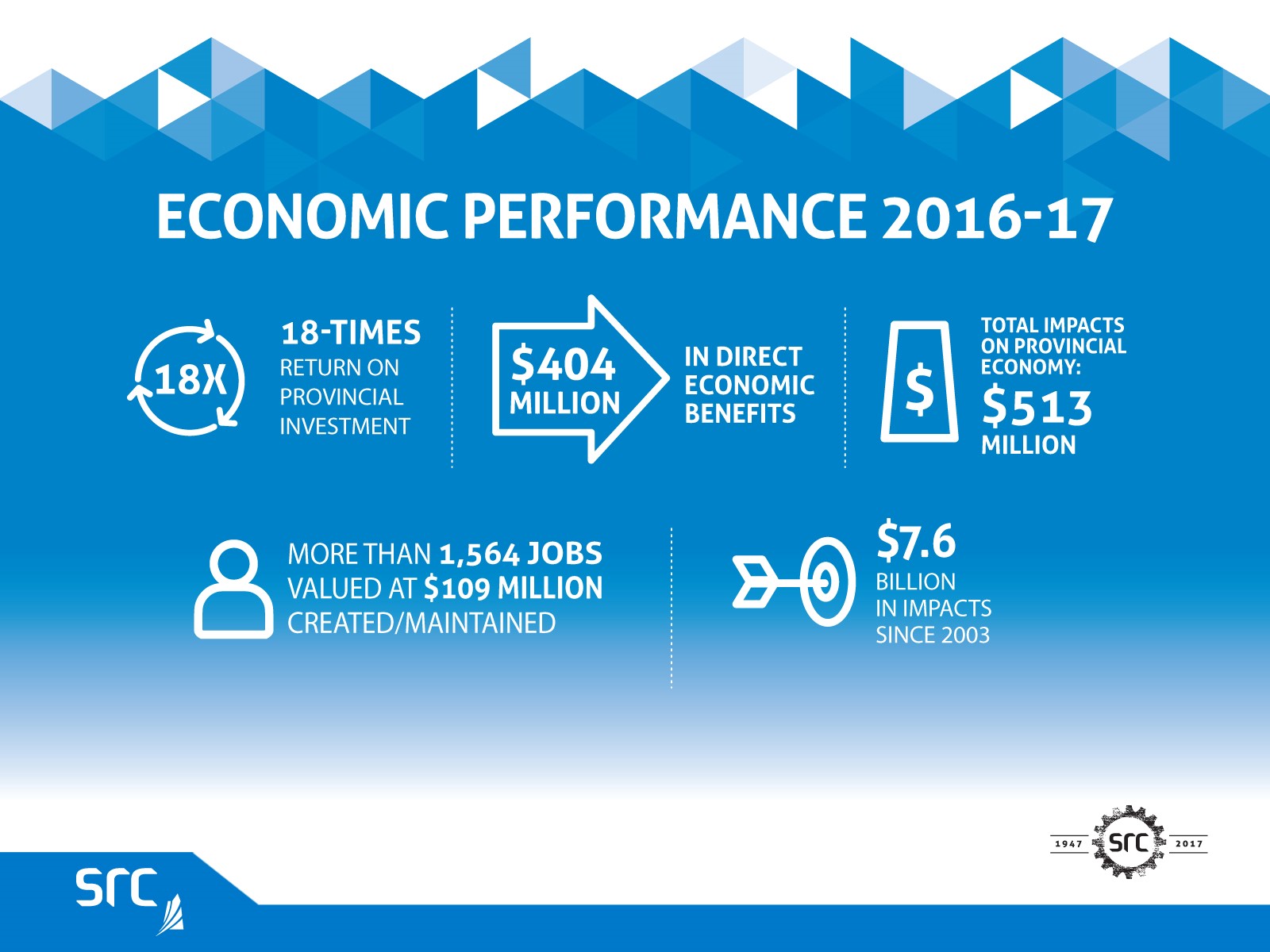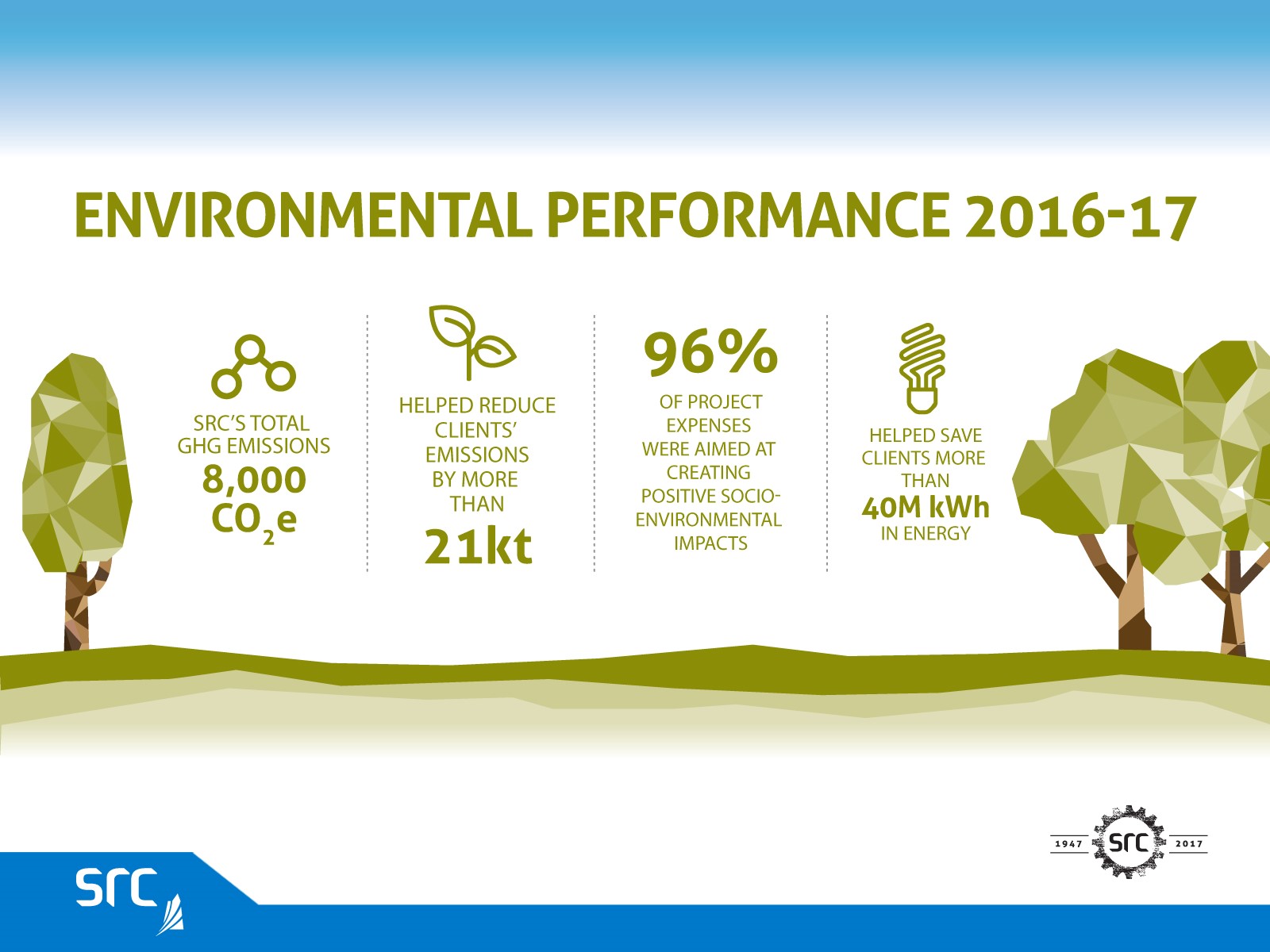
“Innovation Insight” is a blog series written by SRC’s President Emeritus, Dr. Laurier Schramm, which aims to shed light on the importance of innovation in driving economic, societal and environmental growth. This is the fifth story in a sub-series about SRC’s evolution over the past 70 years.
It was very natural that Canada’s research and technology organizations (RTOs), as they came into being early in the 20th century, would become interested in the economic impacts of their work.
Unfortunately, they did not have a way to measure them, beyond assessing the impacts of selected specific projects or programs. They uniformly believed, however, that the impacts of some of those specific projects, for which impact numbers were available, were so large that they would easily pay for all the other projects, of lesser or unknown impact.
By the end of the century, better tools were being developed. A pioneer in this area was the Alberta Research Council (ARC) of the late 1990s. By the early 2000s, SRC had picked up where ARC left off by adopting, adapting, and then extending the original ARC approach.
SRC’s work has demonstrated that a combination of overall impact assessments and specific case studies can provide insights into the economic and social value, and return on investment, of effective applied research and development (R&D) programs.
Assessment Tool for Economic Impacts
SRC’s approach involves an R&D impact assessment tool that can be conducted annually, and relies on “the voice of the customer” to provide inputs that can be aggregated and scaled-up. This assessment can be used to provide conservative annual estimates of R&D return on investment. By continuing to make annual assessments since its original adoption in 2002-03, we have also been able to follow trends and to calculate cumulative impacts.

For the most recent fiscal year, 2016-17, SRC’s direct impact on Saskatchewan’s economy was more than $404 million. SRC also assisted in the creation or maintenance of more than 1,564 Saskatchewan jobs, worth another $109 million. SRC’s cumulative economic impacts from 2003 through 2017 now come to over $7.6 billion in economic and employment impacts in Saskatchewan.
SRC’s Mandate Effectiveness Ratio (MER, also referred to as mission effectiveness), is the leverage that SRC creates in the province with the government’s base annual investment (i.e., the ‘base funding’ provided by the province, distinct from specific R&D contracts). MER is simply SRC’s annual incremental economic impact divided by the government’s annual ‘base funding’ investment in SRC.
Between 2003 and 2017, SRC’s mandate effectiveness ranged from a low of 18 to a high of 46, with an average of about 31. This means that for every $1.00 the government invested in SRC, its work contributed an average return on investment of at least $31 of growth in the Saskatchewan economy.
As a result of SRC’s work with Saskatchewan-based and Saskatchewan-operating clients, all that incremental economic activity doesn’t just grow the provincial economy – it also generates direct financial returns to the province’s General Revenue Fund through increased corporate income taxes (as a result of the incremental business revenues), increased personal income taxes (as a result of the associated jobs), and increased royalty revenue (from incremental natural resource extraction).
Environmental, Sustainability, and/or Social Impacts
In addition to direct economic and job-creation benefits, many of the projects SRC works on achieve positive non-financial impacts like environmental, sustainability, and other social benefits (including human and animal health and safety).
Such impacts are extremely difficult to quantify but are still very important, so SRC has also been attempting to account for at least some of these kinds of impacts of its work, since 2006.
In some areas, only examples can be provided due to the difficulty of quantifying the benefits, such as in improved air quality, water resources, health, and safety. In other areas, they can be quantified. For example, an “audit” basket of projects is examined each year to identify the amount of greenhouse gas (GHG) reductions and/or energy savings impacts from SRC projects.

For the eleven-year period for which data is available (2006-07 through 2016-17), SRC conducted over $300 million worth of R&D projects, contributing socio-environmental impacts that include, among other things:
- over 450 million kWh in cumulative energy savings, enough savings to power over 12,000 Saskatchewan homes for a year
- over 180,000 tonnes in cumulative GHG emissions reduction, enough to offset the emissions from about 25 per cent of Saskatchewan cars and light trucks for a year
The above economic and socio-environmental impacts refer only to SRC’s impacts within Saskatchewan, and don’t count the value of SRC’s impacts in other provinces and territories, or in other countries.
Such broader impacts exist, as reported by SRC’s clients, ranging from enabling the development of pipeline slurry hydrotransport for Alberta’s mineable oil sands, to developing enhanced oil recovery process improvements for oil producers in the United States, to assisting with international diamond exploration.
The “Bottom Line”
A very conservative estimate of SRC’s incremental economic impacts in Saskatchewan over its first 70 years is $7.6 billion. All of us at SRC are now working creatively and diligently with our clients, to realize the next $8 billion for our province.
Interested in learning more about the evolution of research and development in Saskatchewan? Check out Research and Development on the Prairies: A History of the Saskatchewan Research Council.
References:
Schramm, L.L., Research and Development on the Prairies: A History of the Saskatchewan Research Council, Saskatchewan Research Council, Saskatoon, and Amazon.com Inc., 2016.
Schramm, L.L.; Nyirfa, W.; Grismer, K.; Kramers, J., “Research and Development Impact Assessment for Innovation-Enabling Organizations,” Canadian Public Administration, 2011, 54(4), 567-581.
